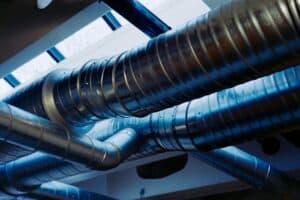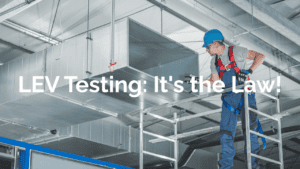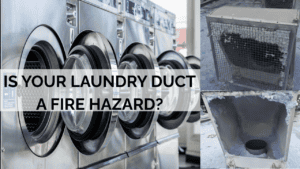When it comes to Indoor Air Quality (IAQ) and Indoor Environmental Quality (IEQ), the biggest barrier to implementing a solution seems to be lack of clarity around guidance.
This article, which is the first of a series of articles on IAQ and IEQ, lists the key UK Guidance for IAQ and IEQ in building services. It includes guidance for a wide range of applications including commercial office space, hospitality, healthcare facilities and schools.
Over the coming months we will cover a diverse range of topics including:
- Monitoring and assessment of IAQ and IEQ
- Options for improving IAQ such as Germicidal UVC, Needlepoint Bipolar Ionisation and Passive Filtration for new build and retrofit
- Ongoing maintenance options for IAQ filtration equipment and general building ventilation
- Health, wellbeing and productivity benefits attributed to good IAQ and IEQ
GET IN TOUCH if you would like to register for our CIBSE Certified CPD covering all of the above.
Key Aspects Covered in Guidance
- Ventilation: Recommendations for adequate ventilation to reduce indoor air pollutants and moisture levels.
- Pollutant Control: Guidelines on controlling sources of indoor pollutants, including tobacco smoke, volatile organic compounds (VOCs), radon, and particulate matter.
- Moisture and Mould Management: Advice on preventing and managing moisture and mould growth to avoid respiratory issues and structural damage.
- Use of Building Materials: Recommendations on selecting low-emission building materials and furnishings to reduce indoor pollutant levels.
- Maintenance of HVAC Systems: Guidance on the regular maintenance and inspection of heating, ventilation, and air conditioning (HVAC) systems to ensure optimal performance and air quality.
- Monitoring and Assessment: Suggestions for monitoring indoor air quality and conducting assessments to identify and mitigate potential issues.
UK Guidance on IAQ and IEQ
The following guidelines and regulations are designed to protect public health by ensuring that indoor environments, whether residential, commercial, or public buildings, maintain high air quality standards.Note that UK guidelines reference Indoor Air Quality Guidelines for Selected Pollutants by WHO.
• Health and Safety Executive (HSE)
HSE provides regulations and recommendations for maintaining healthy indoor air quality in workplaces, focusing on reducing exposure to hazardous substances. A good place to start is Ventilation in the Workplace and Workplace Exposure Limits WEL EH40.
• Building Regulations (Ventilation: Part F)
Sets out requirements for ventilation in buildings to ensure adequate indoor air quality. This includes standards for natural and mechanical ventilation systems.
• British Standards Institution (BSI)
BSI has published the following standards which provide guidelines for the ventilation of buildings, addressing IAQ and thermal environment.
- BS EN 16798-1:2019: Energy performance of buildings. Ventilation for buildings. Indoor environmental input parameters for design and assessment of energy performance of buildings addressing indoor air quality, thermal environment, lighting, and acoustics.
- BS 40101:2022: Building performance evaluation of occupied and operational buildings (using data gathered from tests, measurements, observation and user experience). Specification
- BS 40102-1:2023: Establishes a code of practice for evaluating, monitoring, and assessing indoor environmental quality (IEQ) in non-domestic buildings, prioritising the health and well-being of occupants.
- PAS 3003:2021 Improving indoor air quality for airborne infection control: A Publicly Available Specification (PAS) developed by the British Standards Institution (BSI) focusing on improving indoor air quality (IAQ). This specification provides guidelines for IAQ in buildings, ensuring a healthy indoor environment by addressing various contaminants and their management.
This specification provides a structured approach to improving indoor air quality with a focus on minimising airborne infections. By following this specification, building operators can create healthier indoor environments that enhance occupant health, productivity, and comfort. For detailed guidelines and implementation steps, consulting the full PAS 3003:2021 document from the BSI is recommended.
- BS ISO 16000 series: Indoor Air: A set of standards for “Indoor air” covering various aspects like measurement strategies, sampling methods, and assessment procedures for indoor air quality.
These standards provide comprehensive guidelines for maintaining good indoor air quality in various types of buildings and cover aspects such as ventilation requirements, air quality parameters, and energy performance.
For the latest standards and any new publications that might be relevant to IAQ, consulting the BSI’s official resources is recommended.

Local Authorities
Local councils may offer additional guidance and resources on maintaining good indoor air quality, especially in public buildings and housing.
BESA and CIBSE
The Building Engineering Services Association (BESA) and the Chartered Institution of Building Services Engineers (CIBSE) are key professional organisations in the UK that provide comprehensive guidance on indoor air quality (IAQ). Here’s an overview of their contributions:
Building Engineering Services Association (BESA)
BESA is a trade organisation representing the interests of firms active in the design, installation, commissioning, maintenance, control, and management of engineering systems and services in buildings.
Key BESA IAQ Guidance Documents:
BESA publishes a range of technical guides and standards related to IAQ.
- TR19® Air Specification for Internal Cleanliness and Hygiene Management of Ventilation Systems
This is a specification for ventilation hygiene to minimise the risk posed by contaminated indoor air to human health and well-being. It addresses the urgent need for better cleaning and maintenance of ventilation ducting which has been highlighted by healthcare professionals as vital for reducing building occupants’ exposure to harmful airborne particulates and pollutants.
- A Beginner’s Guide to Indoor Air Quality
This short guide is aimed at professionals with responsibility for the facilities management of small and medium workplaces (for example offices, hotels or leisure facilities) as well as schools and colleges.
- Guide to Good Practice For Indoor Air Quality for Health & Well-being Guide
This guide provides detailed advice on achieving and maintaining good IAQ in buildings, focusing on health and wellbeing. It covers best practices for design, installation, operation, and maintenance of HVAC systems to ensure optimal indoor air quality.
- Buildings as Safe Havens Guide
This guidance is designed to give building managers a better grasp of the complexities of IAQ and arm them the right questions to challenge the competence of their FMs and building services providers.
- A Practical Guide to Mould
This guide highlights how landlords can tackle the problems of damp and mould at the source with straightforward steps to improve the indoor environment.
These guides are designed to support building services professionals in creating and maintaining healthy indoor environments through proper design, installation, and maintenance of HVAC systems and other building services.
Chartered Institution of Building Services Engineers (CIBSE)
CIBSE has produced several guides and documents that address indoor air quality (IAQ) within the context of building services engineering. Here is a list of key CIBSE guides focused on IAQ:
- Technical Memoranda (TM) and Guides: CIBSE produces a wide range of technical memoranda and guides on IAQ, ventilation, and related topics. These guides provide comprehensive technical advice on achieving and maintaining good IAQ in various types of buildings:
- CIBSE TM40: Health and Wellbeing in Building Services: This technical memorandum provides comprehensive guidance on creating healthy indoor environments, including detailed information on IAQ, thermal comfort, lighting, and acoustic performance.
- CIBSE Guide A: Environmental Design: This guide covers various aspects of environmental design, including thermal comfort and IAQ. It provides essential data and recommendations for designing buildings that ensure good indoor air quality.
- CIBSE Guide B: Heating, Ventilating, Air Conditioning and Refrigeration (2016): Particularly, sections within Guide B focus on ventilation and air quality, offering detailed advice on the design, installation, and maintenance of systems to ensure good IAQ.
- CIBSE Guide M: Maintenance Engineering and Management (2023): This guide includes recommendations for maintaining HVAC systems to ensure they provide good air quality throughout their operational life.
- CIBSE KS17: Indoor Air Quality and Ventilation: This Knowledge Series (KS) publication provides a concise overview of IAQ issues and practical advice on designing and maintaining ventilation systems to achieve good indoor air quality.
- CIBSE AM10: Natural Ventilation in Non-Domestic Buildings: This applications manual offers guidance on the design and implementation of natural ventilation systems, focusing on achieving good IAQ in non-domestic buildings.
- CIBSE AM13: Mixed Mode Ventilation: This applications manual addresses mixed-mode ventilation systems, combining natural and mechanical ventilation strategies to optimise IAQ and energy efficiency.
- CIBSE TM21: Minimising Pollution at Air Intakes: This technical memorandum provides guidance on minimising the ingress of outdoor pollutants into buildings through HVAC system intakes, helping to maintain good IAQ.
These guides collectively cover a wide range of topics related to IAQ, providing building services engineers with the knowledge and best practices needed to design, install, and maintain systems that promote healthy indoor environments.
General Air Quality Guidance
In the UK, guidance on indoor air quality (IAQ) is provided by several organisations, including the government, health bodies, and environmental agencies. Here are some key sources of guidance:
• Department for Environment, Food & Rural Affairs (DEFRA)
DEFRA provides comprehensive guidelines and policies on indoor air quality, focusing on reducing indoor air pollutants and improving ventilation. A good starting point is DEFRA’s Air Pollution: Action in a Changing Climate report.
• Public Health England (PHE)
PHE offers guidance on indoor air quality and its impact on health. Guidance
Health matters: air pollution includes advice on managing pollutants such as radon, mould, and chemical contaminants.
• National Institute for Health and Care Excellence (NICE):
NICE has published guidelines on Indoor Air Quality at Home (NG149), aimed at reducing exposure to indoor pollutants and improving health outcomes, particularly for vulnerable populations.
• National Health Service (NHS)
The NHS provides several technical guides and standards related to indoor air quality (IAQ), particularly focused on healthcare facilities. Here are some key NHS documents that address IAQ:
- NHS Estates Technical Bulletin (NETB 2023/01B): application of ultraviolet (UVC) devices for air cleaning in occupied healthcare spaces: guidance and standards.
- Health Technical Memorandum (HTM) 03-01: Specialised Ventilation for Healthcare Premises.
- Part A: Design and Validation This document provides guidance on the design and validation of specialised ventilation systems in healthcare premises, ensuring they meet the necessary standards for IAQ.
- Part B: Operational Management and Performance Verification: This part focuses on the operational management and performance verification of ventilation systems, including maintenance requirements to ensure ongoing good IAQ.
- NHS Estates Technical Bulletin (NETB 2023/01A): application of HEPA filter devices for air cleaning in healthcare spaces: guidance and standards
- Health Technical Memorandum (HTM) 04-01: Safe Water in Healthcare Premises
- Part A: Design, Installation, and Commissioning: Whilst primarily focused on water safety, this document includes guidance on ventilation in relation to controlling humidity and preventing the growth of Legionella and other pathogens that can impact IAQ.
- Part B: Operational Management: This part provides operational management guidance, including maintaining ventilation systems to control moisture and prevent airborne pathogens.
- Health Building Note (HBN) 00-09: Infection Control in the Built Environment: This document outlines the principles of infection control in the design and construction of healthcare facilities, including considerations for ventilation and IAQ to minimise the risk of airborne infections.
- Health Building Note (HBN) 04-01: Supplement 1 – Isolation Facilities for Infectious Patients in Acute Settings: This supplement provides detailed guidance on the design and operation of isolation facilities, with a focus on ventilation and IAQ to control the spread of airborne infections.
- Health Building Note (HBN) 06-01: Facilities for Diagnostic Imaging and Interventional Radiology: This document includes guidelines on ventilation and IAQ in diagnostic imaging and interventional radiology facilities to ensure a safe and healthy environment for patients and staff.
- Health Building Note (HBN) 08-02: Dementia-Friendly Health and Social Care Environments: This HBN provides recommendations for creating environments that support the health and wellbeing of people with dementia, including considerations for IAQ and ventilation.
- Health Building Note (HBN) 14-01: Adult Acute Mental Health Units: This document includes guidance on ensuring good IAQ in mental health units, with considerations for ventilation and environmental control to support patient wellbeing.
These technical guides and health-building notes provide comprehensive guidance on maintaining good IAQ in healthcare facilities, ensuring that the environments are safe, healthy, and supportive for both patients and staff.
We hope that you have found this article useful and don’t hesitate to Get in Touch with one of our experts today if you have an Indoor Air Quality project you would like to discuss.







